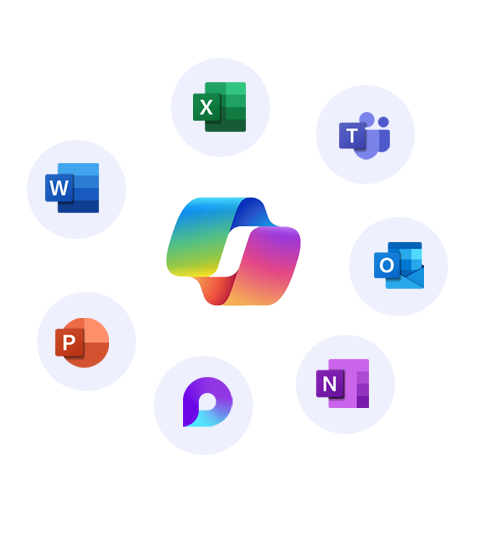Prompt Engineering for Microsoft 365 Copilot
Prompt engineering is the practice of carefully crafting prompts to get the most useful and accurate responses from large language models like Microsoft’s Copilot. As Microsoft 365 Copilot and other AI assistants grow more advanced, properly engineering prompts become key to unleashing their full potential for content creation, code development, and more.
In this article, we’ll cover what exactly prompt engineering is, the benefits it provides businesses and individuals, tips for optimizing prompts for Copilot, and practical applications of prompt engineering with Microsoft’s code-focused language model.
What Is Prompt Engineering?
Put simply, prompt engineering is the strategic practice of designing input prompts that allow large language models to provide more accurate, relevant, and helpful outputs.
Unlike chatting with a human assistant, Copilot and other AI systems do not have a true understanding of the world or a user’s intended goals. They generate suggestions based solely on recognizing patterns in their training data.
By carefully engineering prompts with the right context, examples, constraints, and instructions, users can greatly improve the quality and usefulness of the AI’s responses.
As Copilot continues developing, prompt engineering techniques let users tap into more of its potential for assisting with coding, writing, content creation, and more – while avoiding irrelevant, biased, or unhelpful suggestions.
How Can Prompt Engineering Benefit Any Business?
Prompt engineering allows organizations to leverage AI capabilities like content generation, code writing, and knowledge retrieval while retaining full control over what information is provided to users and what tasks are completed. This makes prompt design a useful tool for any business seeking to implement AI applications safely and effectively.
Some key benefits of prompt engineering include:
-
More Efficient Content Creation
Copilot can drastically cut the time needed to produce written content when prompted correctly. Rather than writing from scratch, prompt engineering allows for feeding Copilot relevant background information and examples so its suggestions closely match desired content types and styles.
-
Code Development Acceleration
Prompt-engineered correctly, Copilot cuts development time by generating reams of code fitting parameters supplied in prompts. This code completion frees developers to focus less on rote coding and more on higher-level app planning and optimization.
-
Cost Savings
Automating parts of creative and repetitive tasks with a Copilot driven by prompt engineering reduces the human hours required significantly. This translates into sizable cost savings over manual development and writing.
-
Error Reduction
Well-designed prompts provide Copilot critical guard rails that improve accuracy and relevance while avoiding biased, inappropriate, or logically flawed text and code suggestions. This reduces the human review needed to correct errors.
How to Use Copilot for Prompt Engineering?
Crafting effective prompts requires understanding Copilot’s abilities, limits, and training methodology plus experimentation. Here are key tips:
-
Give Relevant Context
Frame prompts with background details about software requirements, code logic goals, content themes, etc. so Copilot can tailor responses appropriately.
-
Provide Examples
Include sample text, code blocks, data structures, etc. showing Copilot exactly what you wish it to generate more of. The closer the examples match the desired end results, the better.
-
Define Constraints
Set clear boundaries for length, language styles, data types/formats, programming languages, and paradigms, etc. to keep Copilot’s suggestions on track.
-
Specify Inputs/Outputs
Clearly, the detailed required inputs and any mandatory outputs where applicable so logic flows properly.
-
Include Instructions
Give Copilot unambiguous yet flexible instructions so it understands the prompt’s ultimate intent and how to complete the task.
Follow these rules of thumb for prompt engineering, use plenty of experiments and small iterations, and Copilot can handle increasingly sophisticated coding and writing tasks.
Tips for Optimizing Prompts
Follow these best practices when engineering prompts to maximize Copilot’s value:
- Frame prompts as a clear “assistant” request
- Use natural language with clear, concise instructions
- Stimulate creativity by allowing flexibility
- Guide output tone/style with samples
- Reign in behavior with defined constraints
- Start broad then add complexity gradually
- Verify quality before expanding use
- Document and reuse effective prompts
Continuous iteration and testing prompts with small viable examples are key to optimization.
Practical Uses of Prompt Engineering
Here are some of the many ways properly engineered prompts allow harnessing Copilot’s power:
- Content Creation: Blog posts, social media updates, website copy, newsletters, ads, and more can leverage Copilot to jumpstart drafting or enhancing existing materials.
- Web/App Development: Copilot accelerates coding user interfaces, APIs, component logic, databases, and more in languages like Python, React, JavaScript, CSS, SQL, etc.
- Data Analysis: Prompt Copilot to suggest data models, extraction/processing code, visualization approaches, and report templates to boost analytics.
- Research: Copilot with literature examples, methodology, outlines, etc. to accelerate search, analysis, and summary writing.
- Education: Generate code snippets, quiz questions, lesson resources, and more for tech courses.
- Document Drafting: Kickstart guides, templates, applications, and other documents with pre-trained examples.
- File Conversion: With formatting examples, transform file types like Office docs to PDFs, JSON to CSV, etc.
As Copilot develops, so will the applications unlocked by prompt engineering. Continuous experimentation and tuning prompts for positive reinforcement, when outputs match expectations, will open more possibilities.
Conclusion
Prompt engineering taps into Microsoft Copilot’s immense potential for creating written content and code. Carefully structuring requests makes Copilot extremely useful while avoiding nonsensical suggestions. With the right prompts, businesses and developers can accelerate work, cut costs, boost efficiency, and reduce errors across codebases, documents, and websites.
Prompt optimization is equally important. By providing Copilot with high-quality examples, unambiguous constraints, and clear instructions, Copilot becomes an indispensable AI assistant for writing and coding rather than an ineffective nuisance.
Continued advances to Copilot’s training and logic combined with the refinements of prompt engineering techniques promise even more valuable applications soon that boost productivity and creativity.
Apps4Rent – Tier 1 Office 365 Cloud Solution Provider
Copilot integrates with all your favorite Microsoft apps

Get started with
Microsoft Copilot today!